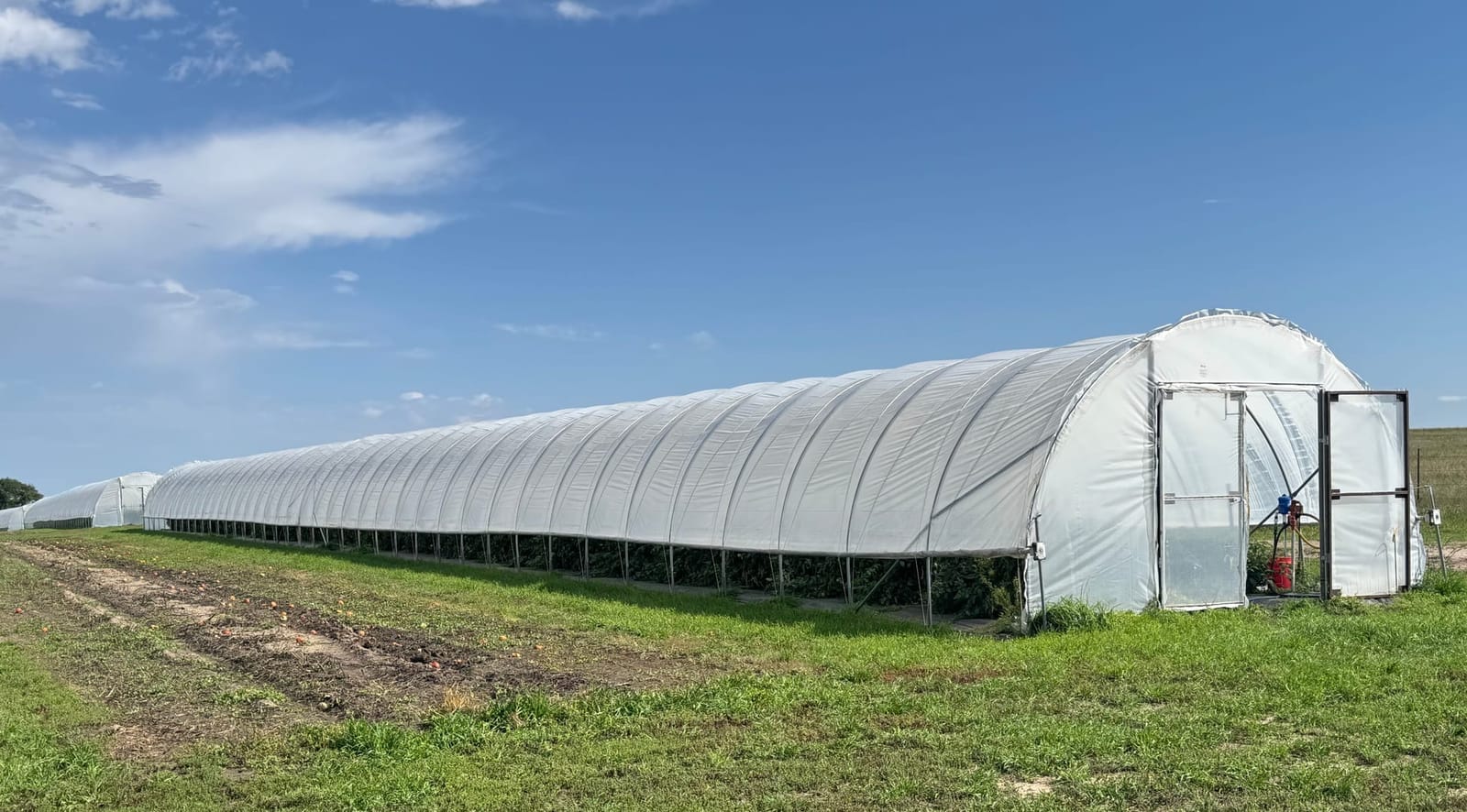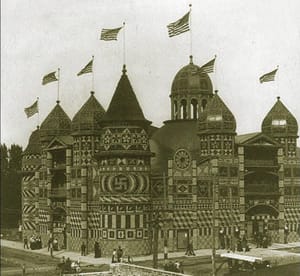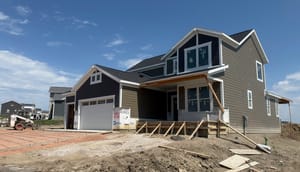OKATON, S.D. – When snow covers the frozen ground, and most South Dakota farmers have sold or stored their products for the season, the operators of Cedar Creek Gardens are still able to grow vegetables and harvest a lucrative crop.
Located in a remote area southwest of Murdo, about 12 miles south of Interstate 90, the sprawling farm is one of dozens in the state that utilize what are called farm tunnels to extend the planting and growing seasons.
The tunnels are fortified above-ground hoop buildings covered in plastic that capture heat from the sun, creating a greenhouse effect. Many of the tunnels at Cedar Creek are covered with two separated layers of plastic and have fans that circulate warm air between the layers, creating even warmer growing conditions.
The tunnels differ from greenhouses in that crops are grown directly into the soil rather than in raised boxes or beds, and they are watered from the ground up instead of from above.
Cedar Creek is run by Peggy Martin and Bud Manke, who are business partners and good friends. Martin and Manke were some of the first South Dakota farmers to install tunnels after reading about them online in the early 2000s.
"At first, we were just going to grow food for our families," Martin said. "But it's become a passion, and they (the tunnels) have helped us grow to what we are now."
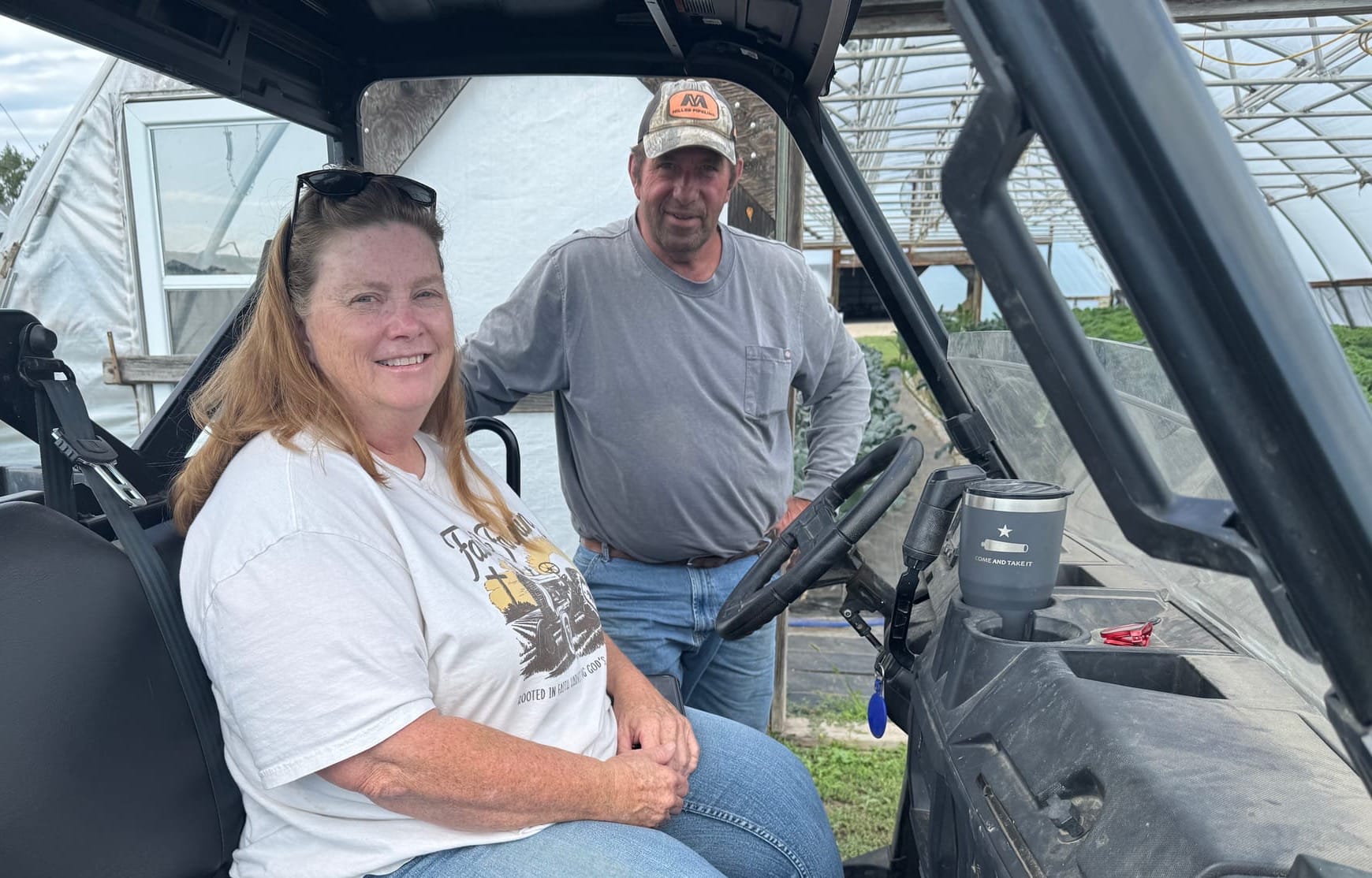
Beyond extending the growing season by up to four months each year, the controlled weather conditions and targeted water use also allow them to produce top-quality, organically grown vegetables.
One-pound tomatoes that are firm, filled with nutrients and free of blemishes. Banana peppers as long as bananas and so crisp they snap. Sweet onions the size of softballs. Kale plants that top 5 feet in height.
Tunnels part of a diversified operation
On their farm, they grow crops on 14 acres, have about 1,400 free-range laying chickens, and Manke raises cattle. The farm is dotted with about a dozen tunnel buildings, the largest of which are up to 14 feet tall, 30 feet wide and 200 feet long.
Martin said the tunnels have enabled them to expand their farm and its output over the past 25 and help them grow into the largest South Dakota specialty farming operation west of the Missouri River.
Martin, Manke and the farmhands they hire grow a wide variety of seasonal produce, including tomatoes (the primary cash crop) as well as pumpkins, melons, sweet and green onions, red and green peppers, kale, cabbage, broccoli, sugar-snap peas, radishes, lettuce and zucchini.
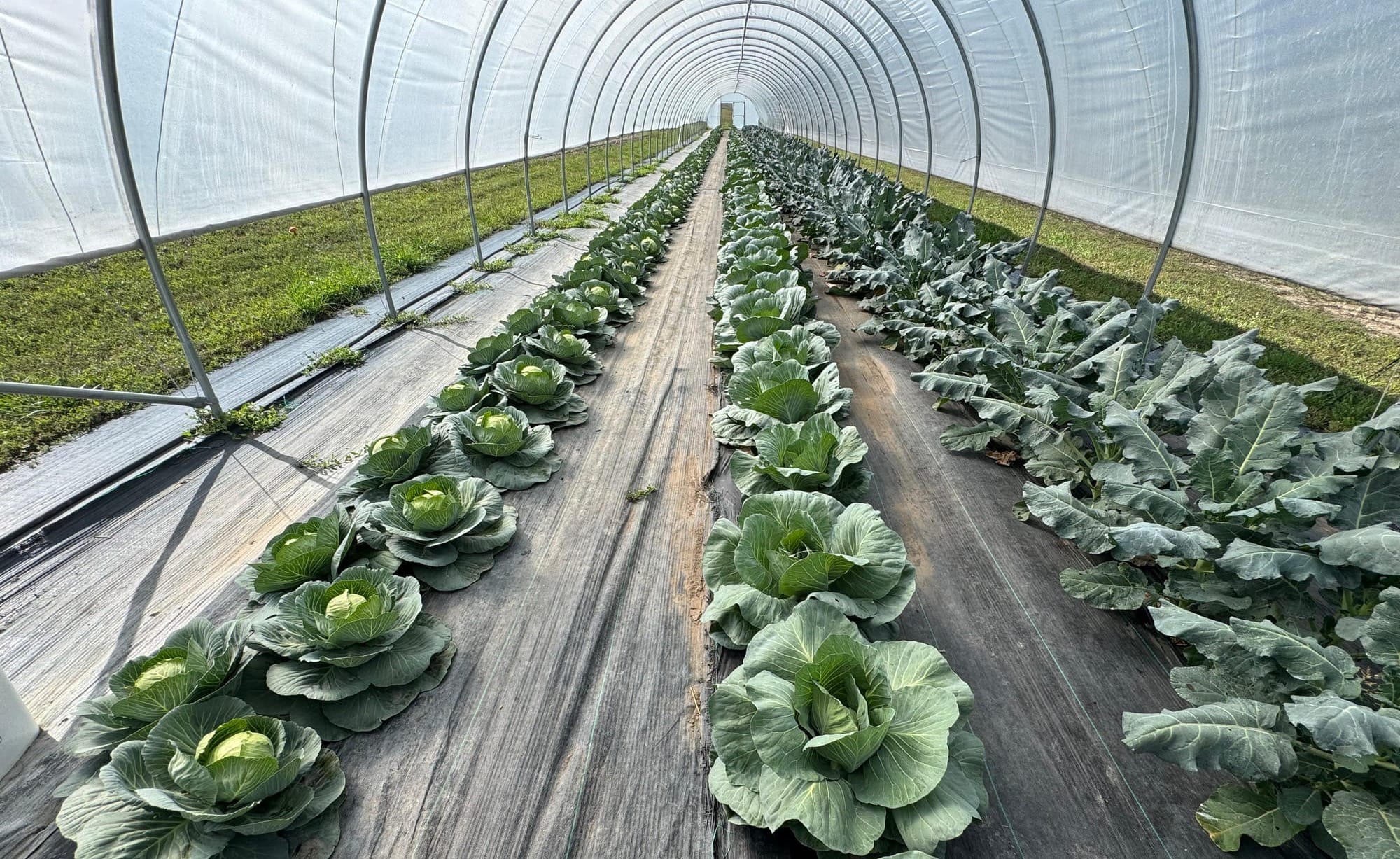
The foods they grow and raise are sold at area farm stands and farmer's markets but also through a weekly wholesale business that serves West River grocery stores, restaurants and a buyer's group.
The tunnels have allowed them to plant vegetables as early as March and maintain growth of some hearty varieties for picking as late as mid-December. The first frost date in their region is typically around Sept. 15, Manke said.
"There can be snow out here in the wintertime and it's 20 degrees when the sun comes up, but it can be 100 degrees inside the tunnels," Manke said. "It can actually get too hot sometimes, so we have to be careful and open things up."
Higher productivity, higher profits
Martin did the math to show how the tunnels can increase productivity and profits.
In a 200-foot tunnel, they can place three rows of 100 tomato plants, each of which can produce 40 pounds of fruit, more than double a typical household tomato plant, she said. At an average of $2.25 per pound, and even with 20% waste, that single tunnel can produce $21,600 of tomatoes in a single grow-out.
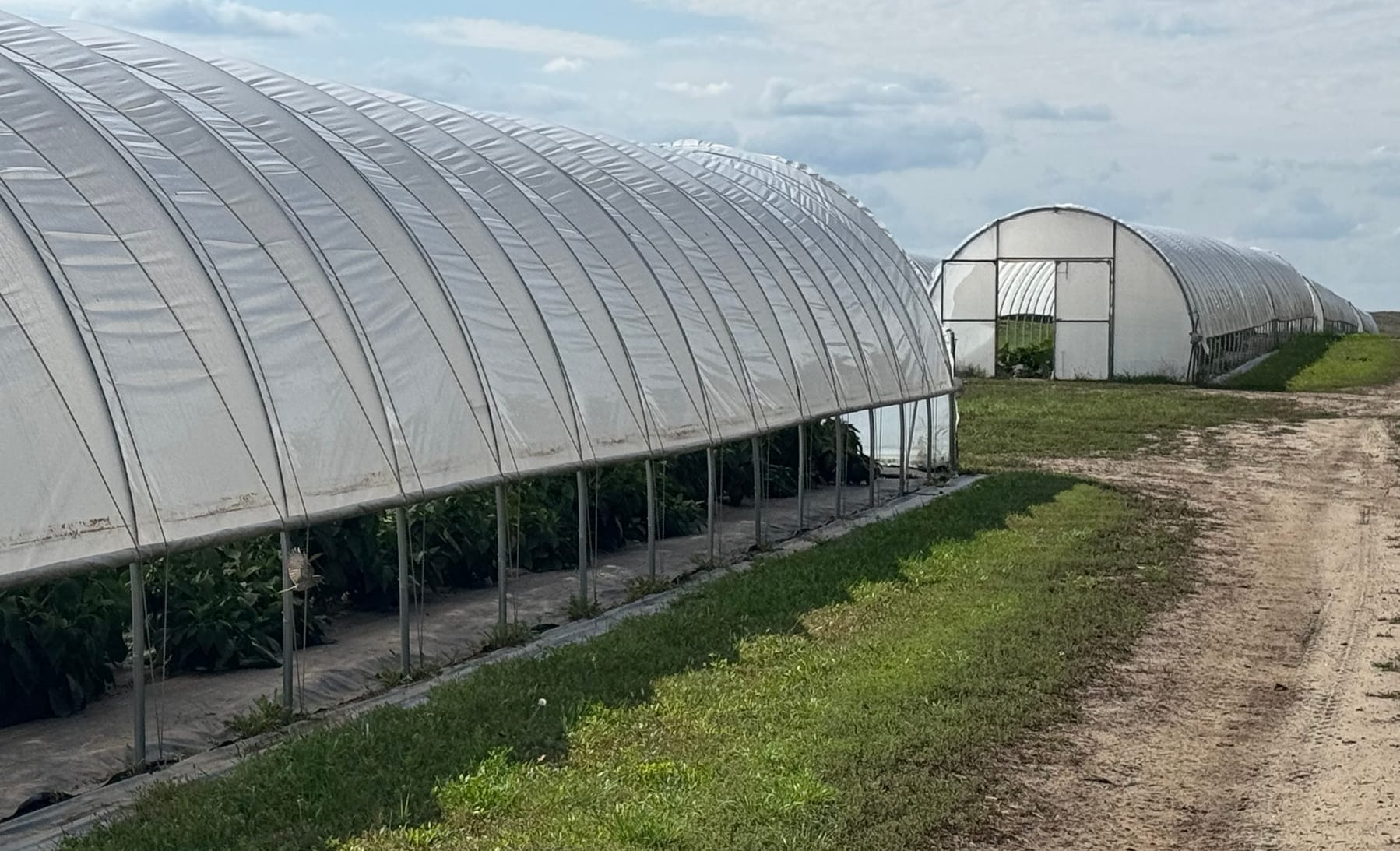
Rachel Lawton, the South Dakota urban conservationist for the U.S. Department of Agriculture's Natural Resources Conservation Service, runs the federal program that provides financial assistance to qualified individuals and operations that want to install tunnel farms.
Lawton, based in Sioux Falls, said the tunnels aren't suitable for high-production farms that raise thousands of bushels of corn, soybeans or wheat. But they work well for specialty crop farmers or backyard gardeners who want to produce a stable, almost year-round crop of vegetables, she said.
Support stories about rural South Dakota with a tax-deductible donation.
"The season extension with high tunnels is beneficial, but it’s even more beneficial when you look at the quality of produce they’re producing while also getting protection from wind, hail, frost, chemical drift and pests," she said.
NRCS accepts applications for financial assistance in development of tunnel gardens each fall, with recipients receiving up to 75% of the cost of a project, Lawton said. In addition, successful applicants receive NRCS help in developing a wider-ranging conservation plan for their commercial farms or home gardening projects, she said.
Interest in tunnels growing in South Dakota
Lawton said she has seen increased interest in tunnel farming in South Dakota in recent years.
In recent years, the agency has provided funding for about 10 to 15 tunnels projects a year with money from the USDA Environmental Quality Incentive Program, or EQIP.
The largest tunnels, up to about 3,000 square feet, can cost more than $20,000, though smaller tunnels with fewer amenities cost far less, Lawton said. Tunnels cannot be used for equipment storage or livestock handling, and NRCS applicants must own or rent land, be U.S. citizens and make less than $900,000 a year, she said.
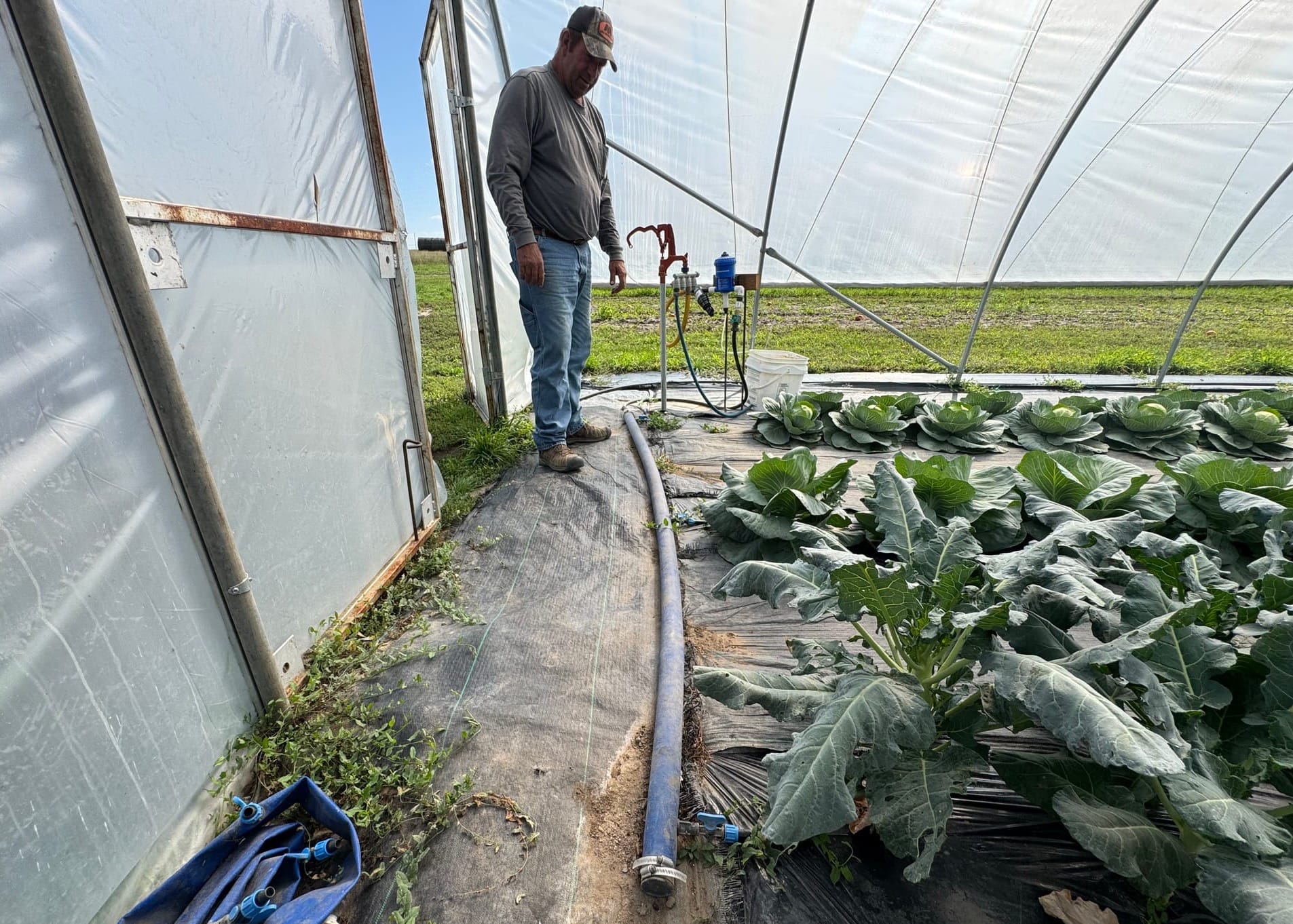
Lawton cautioned that people who consider construction of a tunnel should be aware that they require frequent maintenance and are susceptible to damage from the elements.
"As wonderful and as cool as they are, I wouldn’t say they are the solution to everything," she said. "There can be a lot of pitfalls and a lot of work if you aren't an experienced grower."
Martin now a 'resident expert' on tunnels
The tunnels come in three basic sizes, from "high tunnels" that are the tallest and widest to "caterpillar tunnels" that are shorter and more narrow to "low tunnels" which are light enough to lift and change positions quickly.
Lawton refers to Martin as South Dakota's "high tunnel resident expert" because she has more high tunnels than most South Dakota farmers and because she has more than two decades of operating them.
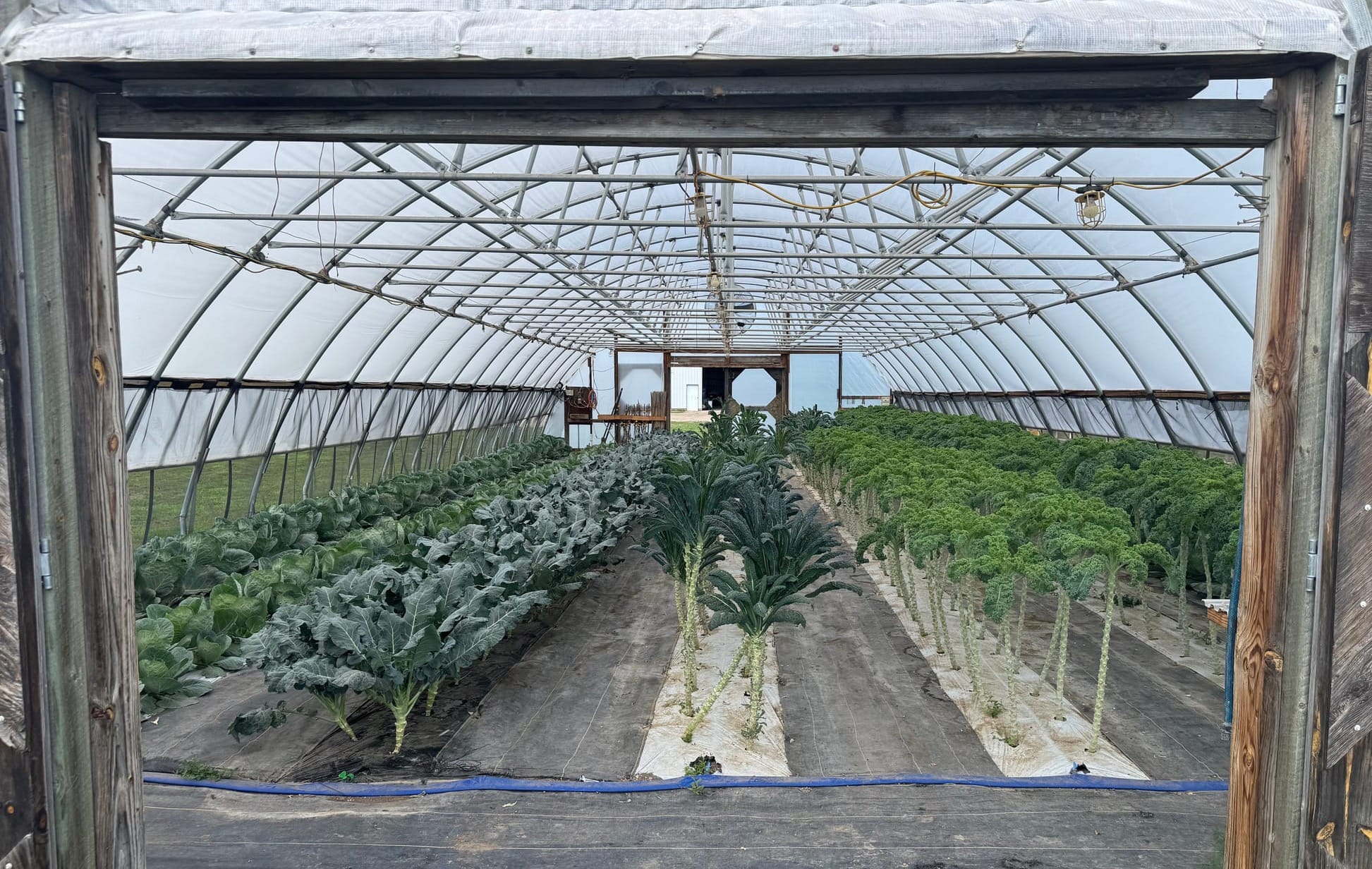
Martin likens the tunnels to "problematic 2-year-old kids" that require patience and wisdom to manage properly. "You can't just plant them and then leave home," she said. "If there's bad weather coming, you have to roll down the sides and get them buttoned up."
But for those who accept the hard work and risk, the payoff in extended growing time, improved quality of products and protection of natural resources can far outweigh those drawbacks, Lawton said. Conservation benefits include soil conservation and reduced water, pesticide and electricity use, she said.
“You can do multiple successions of crops, and you have a better growing environment, which essentially translates into dollars because you can grow more and sell more or grow more food for your own family,” Lawton said. “It all starts with conservation, but the end product is something that is more efficient, more productive and more financially beneficial all at the same time.”
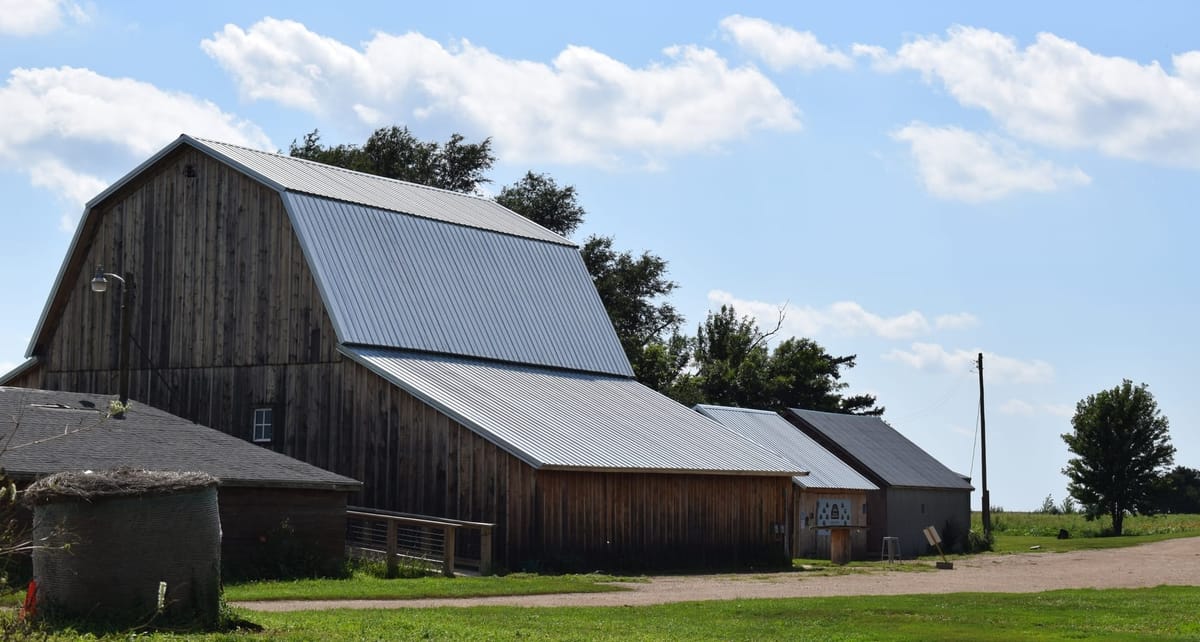
This story was produced by South Dakota News Watch, an independent, nonprofit organization. Read more stories and donate at sdnewswatch.org and sign up for an email to get stories when they're published. Contact Bart Pfankuch at bart.pfankuch@sdnewswatch.org.

